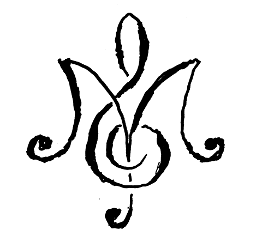I began the Guitar Transcriptions of piano masterworks in 2015, but it was interrupted in order to complete the Brontë Ballads. Work resumed in 2019, and about a dozen finished Transcriptions are now available. In the tradition of Liszt, these are literal transcriptions, i.e. note-for-note to the greatest possible extent. Achieving that on six-string guitar gives rise to some unusual tunings and techniques. I have around fifty transcriptions ranging in status from ‘promising’ to ‘finished’. Several are available for free download, including works by Schumann, Schubert and Liszt.
The Brontë Ballads project was substantially completed in 2017. This is a collection of some 120 songs for guitar and voice, setting to music poems by Emily Brontë, in celebration of her 2018 bicentenary. My goal was to write songs that she might have sung herself, or at least songs that she would have appreciated. Writing them has provided one of the keenest pleasures of my life, and I couldn't have done it without the inspiration of this most musical of poets. Thank you Emily!
There is a sort of blog/news thing.

Note that my guitar scores provide both staff and tablature notations. The tablature is slightly nonstandard: I show stringlines only sparingly, use a better barre notation, and embrace a couple other minor departures. A guide is available (and in active expansion), but anyone already familiar with tablature probably won't need it. For those familiar with staff notation, the tablature can usually be understood by a direct comparison.
Tablature is valuable because it shows you where on the fretboard to place your fingers. On the other hand, only the musical staff gives you rhythm, voicing, expression and articulation information. Also, reading tablature for the pitches is awkward (although the information is there)—staff notation is much better in this regard.
With the Transcriptions, given the unusual tunings, the tablature is indispensable. The tunings and tablature are actually my only contributions in the Transcriptions; the musical staves are exactly those published by the composers (with piano fingerings cleared away). The tabs (more or less faithful to the original score) are in an appendix, since most players will already be familiar with the pieces, whether from playing them on piano or from recordings. Thus the tabs can be presented concisely without compromising to try to align them with the staves; and each player can decide for themself which fingerings and positions to pencil in on the pristine score.
In the case of the Ballads, I've opted to keep the tablature and staves together in the default format. The synchronisation between tab and staff is an added value, and the parallel presentation helps one learn the tab or the staff notation (or even both...), as well as facilitating quick sanity checks in case you think there is an error (not unlikely). For those who object to the space taken up by tablature, the music is available in a layout that relegates the tabs to an appendix. I expect most people will appreciate the tabs since there is quite a lot of campanella and playing up the neck.

Any future musical works (or apps) will be available here. I engineered a score browser which will give you increasing access to the available scores as you make purchases (or donations). Newcomers can also view a smattering of the music this way, but if you register a free account you can access a lot more. For a limited time, new registrants will get complete access to all scores in the score browser. I’ve opted for hand-written music—computers have already invaded too much of my life. As fairer copies are made, the site will be updated. Those who have paid for a piece of music will receive PDF updates to the piece by email, or if you've declined email updates you can download the latest fair-copy revision for free.
Thanks for visiting, and I hope you derive pleasure from my works.
Dacia Seniuk
Vancouver Island
Jan. 9, 2018
